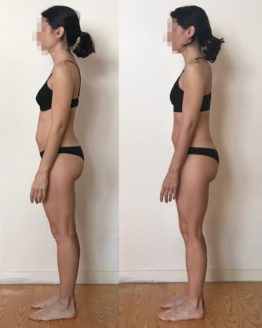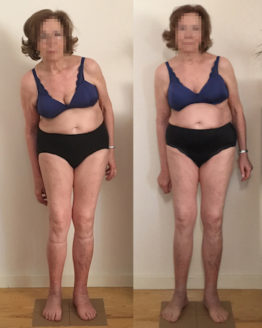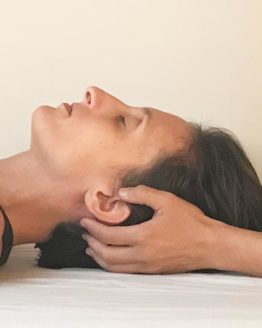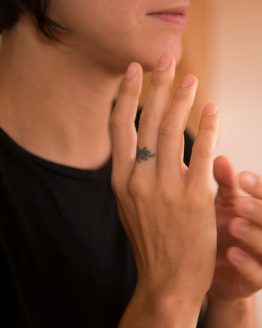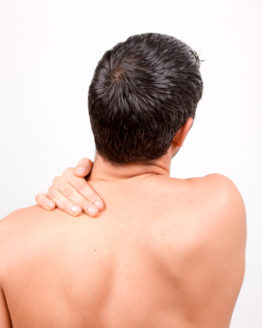Biodynamic Craniosacral Therapy
The word biodynamic has its source in “bios” and “dynamis,” which in Greek mean “life” and “force” respectively. Biodynamic Craniosacral Therapy is thus a form of craniosacral therapy that acknowledges the inherent life force as the deepest foundation of the human system. This vital life force is sometimes referred to as the Breath of Life and is the most fundamental ordering principle within our system. This is where our intrinsic health, our self-healing capability, lies. Our health is never lost, only obscured by our life conditions and experiences. Illness and dis-ease manifest as a result. The intention of Biodynamic Craniosacral Therapy is to support the client’s system to re-access and realign to this life force. Well-being and ease can be re-established as the ordering potency of the Breath of Life is able to come into relationship with seemingly chaotic and disordered cells and tissues.
The most distinguishing element of Biodynamic Craniosacral Therapy, as opposed to other lineages of craniosacral therapy, is the concept of non-manipulation. This is based on the belief that only the client’s own system knows exactly what it needs and in what order. Any intervention from the side of the therapist, regardless of experience or training, can only be as good as an educated guess. The intention is for the therapist to hold the client in deep listening so as to help co-create a safe and supportive space where the client’s system is able to come back in touch with its own healing capabilities. Healing is non-linear and unique to the individual.
Who can benefit from Biodynamic Craniosacral Therapy?
Everyone can benefit from Biodynamic Craniosacral Therapy. The results, however, may be more dramatic and apparent for some. Since this is a therapy that supports and promotes general health in the body, and particularly in the nervous system, it works in the prevention and relief of many chronic and acute symptoms arising from stress and trauma. These include birth trauma, emotional trauma, and trauma from dental work, falls, accidents and surgeries. Biodynamic Craniosacral Therapy can also greatly support the aging process by assisting in the prevention and relief of stiffness, dryness, memory loss, inflammation and immune imbalances.
What symptoms respond best to Biodynamic Craniosacral Therapy?
- Migraines, tension headaches, head injuries, chronic and acute pains, mobility impairments, fibromyalgia, carpal tunnel syndrome, menstrual cramps and other unexplained pains
- Insomnia and sleep difficulties, anxiety, depression, anomie, emotional trauma, learning difficulties, autism, dyslexia, ADD (Attention Deficit Disorder), ADHD (Attention Deficit Hyperactivity Disorder), PTSD (Post Traumatic Stress Disorder)
- Circulatory problems, sinus problems, asthma
- Neuroendocrine imbalances, organ dysfunctions, irritable bowel syndrome
- TMJ (Temporomandibular Joint) and other dental problems, tinnitus, etc.
What are some of the positive effects of receiving Biodynamic Craniosacral Therapy?
- Overall relaxed feeling
- Better sleep quality
- Increase in energy
- Reduction of stress and anxiety
- Reduction of chronic or acute pains
- Increased body awareness
- Sense of general well-being
- Sense of spiritual well-being
- Greater connection to others
- Increased capacity for dealing with life’s vicissitudes
- Connection with one’s life force
- Equanimity, contentment, joy
How many sessions will I need?
This depends entirely on your intention for receiving work. If you come to Biodynamic Craniosacral Therapy with the intention of relieving symptoms, then it would depend on what the symptoms are and how readily your system responds to the work. In general, clients often report a felt difference even with one session, and significant shifts in five or more. Some, however, receive work on a weekly or bi-weekly basis to maintain physical, emotional and spiritual health while others look to the work as a resource for coping with the inevitable stresses of modern life.
Can children benefit?
Children usually respond well to Biodynamic Craniosacral Therapy as it is gentle and non-invasive. Perhaps because children are still relatively less conditioned, their systems tend to respond very readily to contact. Therapy can also feel comforting and reassuring as they develop trust in the therapist.
Is Biodynamic Craniosacral Therapy safe during pregnancy?
Biodynamic Craniosacral Therapy is not only safe but recommended during pregnancy, childbirth and after birth for both mother and child as it helps to calm the nervous system of both, thus encouraging bonding to occur. Work on infants can also help to resolve birth stresses and trauma, which can remain in the system into adulthood if left unsupported.
How are the various types of Craniosacral therapies different, and how do I know which is right for me?
Craniosacral therapy, due to its evolution over the years, can range from being very mechanical and manipulative to completely non-manipulative. Various schools have also started to name the work slightly differently to distinguish themselves from other institutions, thus adding to the confusion about what exactly craniosacral therapy is, and within that, what Biodynamic Craniosacral Therapy is. Nevertheless, not only can the different flavors of craniosacral therapy feel different, the experience can also vary significantly from therapist to therapist who practice the same type of craniosacral therapy. Each person is unique and a particular approach to the work may speak more to us at a given point in time than others. Ultimately, though, it is probably the relationship with the therapist that would determine if a particular therapy is right for you.
A Brief History of Craniosacral Therapy
This work was developed by the American osteopath, Dr. William Garner Sutherland (1873 – 1954), in the early 1900s and was referred to as Cranial Osteopathy. Dr. Sutherland taught the work to many osteopaths, who later became teachers of the work themselves. Dr. John E. Upledger was the first osteopath to teach the work to non-osteopaths and coined the term “Craniosacral Therapy,” since technically, only osteopaths could practice Cranial Osteopathy. Since then, many other schools of Craniosacral Therapy have been established.
Dr. Sutherland continued developing the work until the end of his life, and during those years, the work went through many phases of change and refinement. Born from the research into cranial bones and the subtle movements that they make, the work evolved into a form of healing that rests primarily in deep listening to the client’s system and facilitating the healing properties of the Breath of Life. This also meant that the work evolved from a more mechanical and manipulative style to a completely non-manipulative, biodynamic style.
In recent years, Franklyn Sills, co-founder of the Karuna Institute, has made significant contribution to the development and teaching of the biodynamic style of the work. Schools throughout the world that teach his 2-year curriculum refer to their work as “Biodynamic Craniosacral Therapy” or “Craniosacral Biodynamics.”

